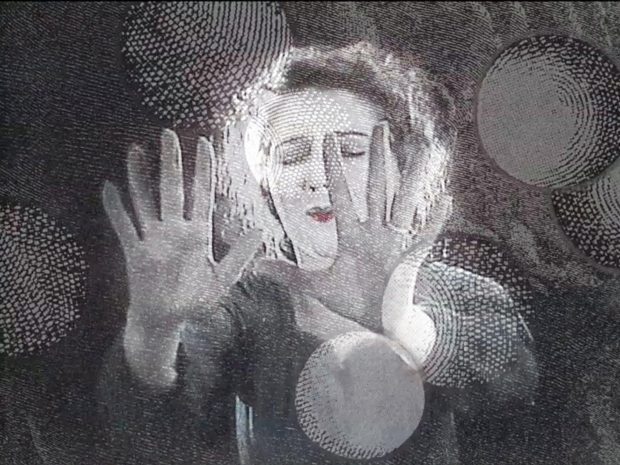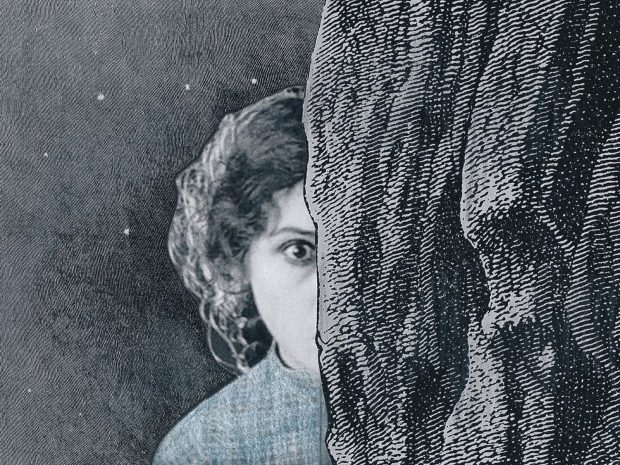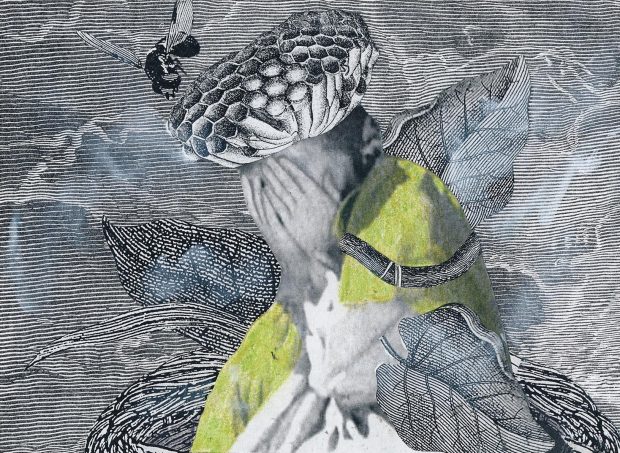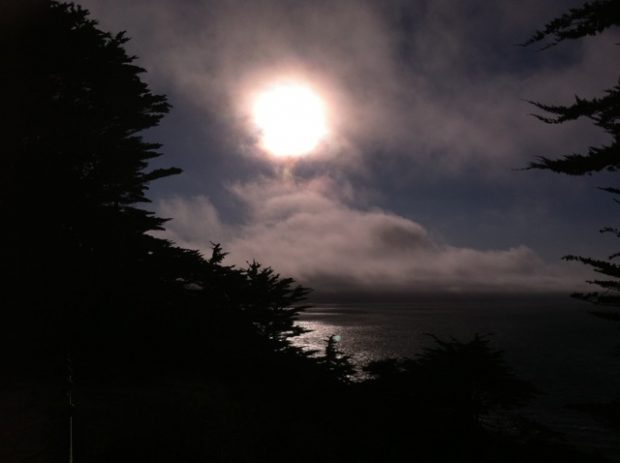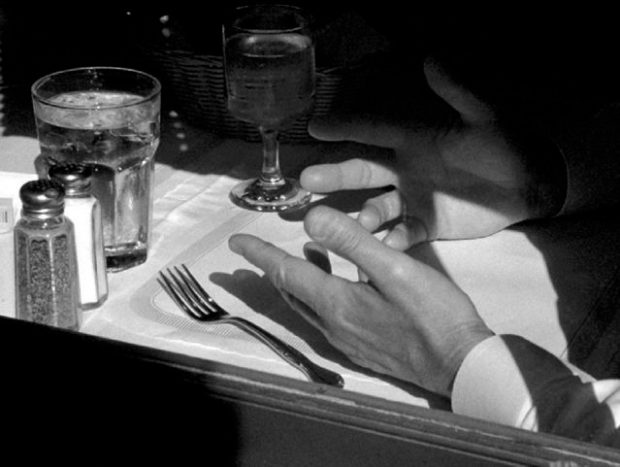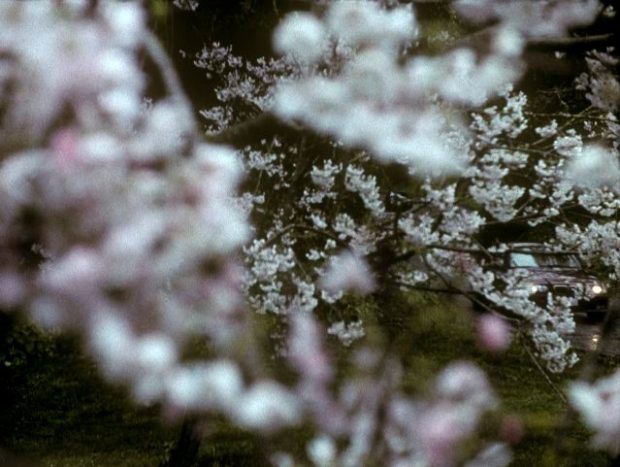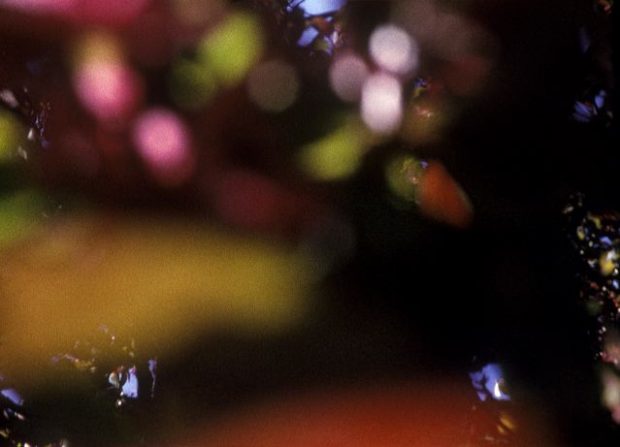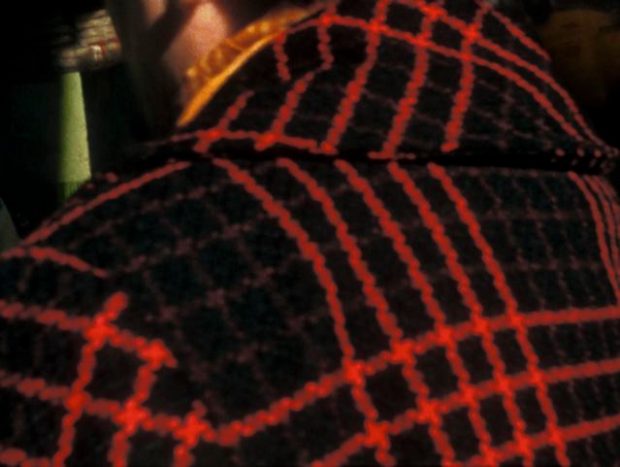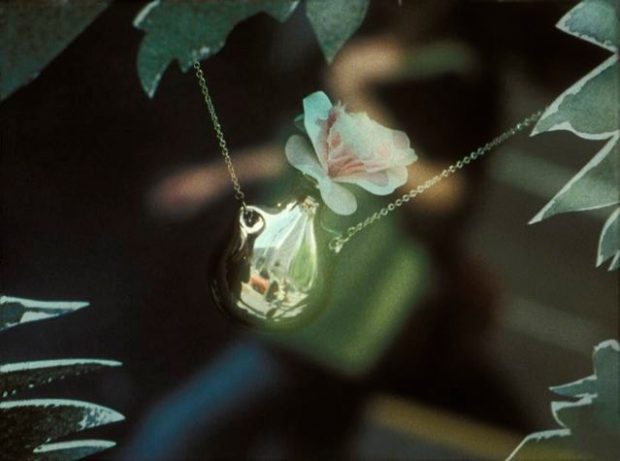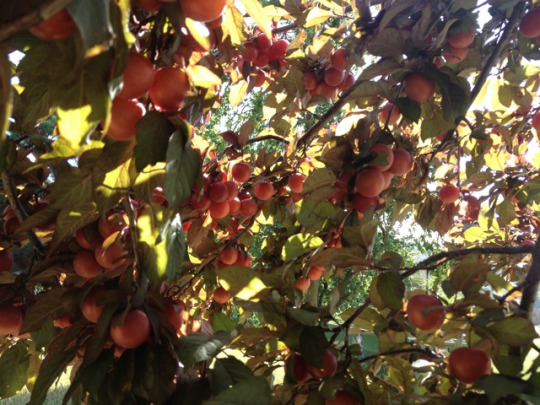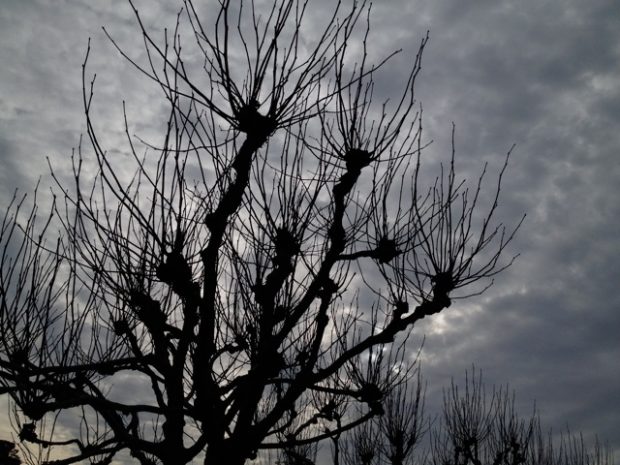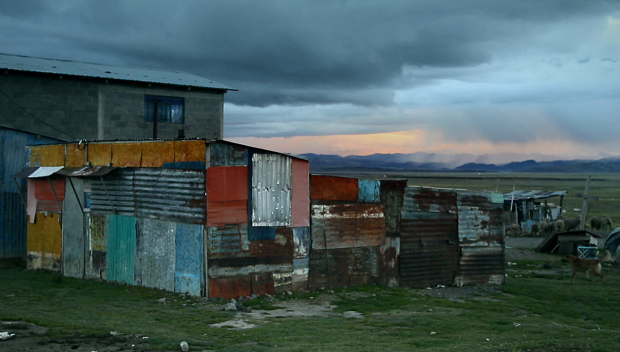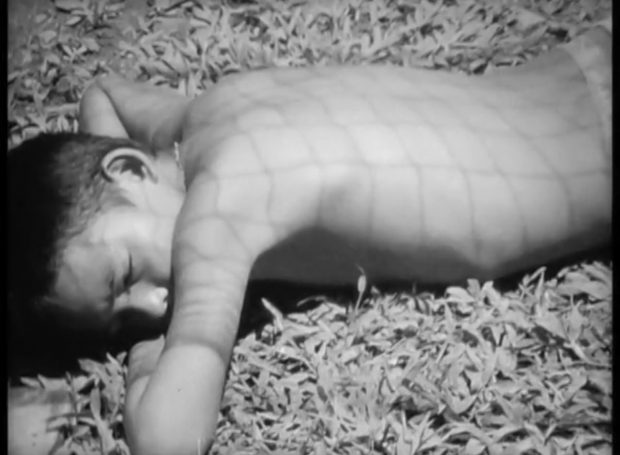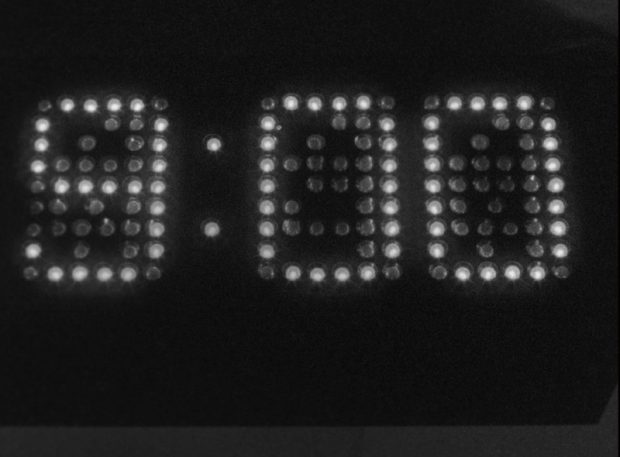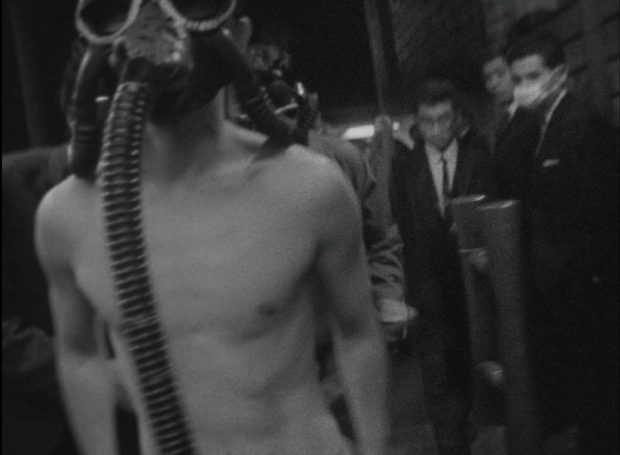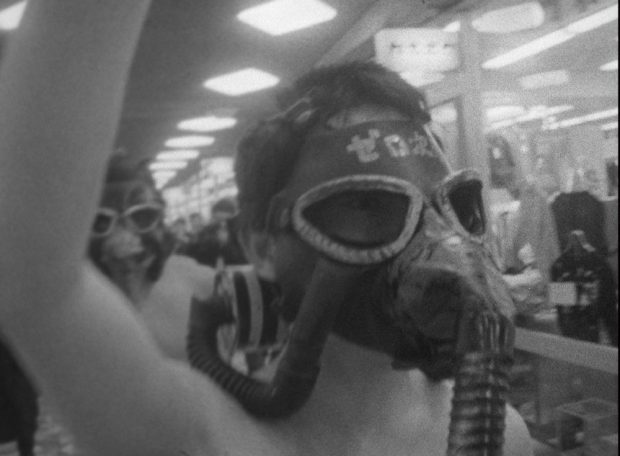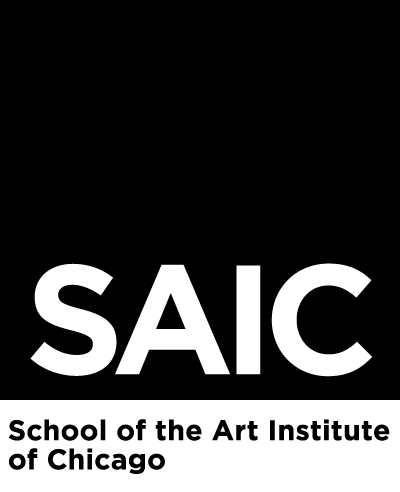March 9 – The Passion of Remembrance
Posted by | Paris Jomadiao | Posted on | March 3, 2017
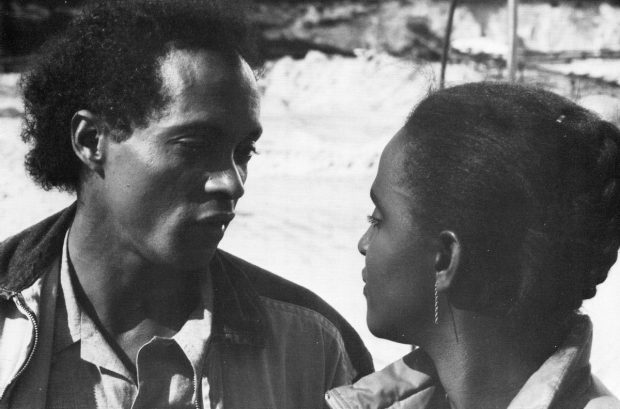
Maureen Blackwood and Isaac Julien/Sankofa Film and Video, still from The Passion of Remembrance, 1986. Image courtesy of Women Make Movies.
The Sankofa Film and Video Collective was part of a wave of politically-minded Black independent filmmakers who emerged in London in the 1980s, during an era of increasing social conservatism and racial unrest. The group’s acclaimed first feature, co-directed by members Maureen Blackwood and Isaac Julien, is a prismatic look at gender, race, sexuality, and generational conflict. Interwoven with footage of England’s inner-city riots of the early 1980s, the film is comprised of two main storylines: one features a dialogue between an allegorical Black Man and Black Woman, and the other follows the everyday experiences of the Baptiste family from the 1950s through the 1980s. A rich and complex work whose reflections reverberate today.
1986, United Kingdom, Maureen Blackwood and Isaac Julien/Sankofa Film and Video Collective, 16mm, 80 min
Maureen Blackwood is a writer and director. After completing a degree in media studies, she cofounded the Sankofa Film and Video Collective. Her works with Sankofa include The Passion of Remembrance (1986), Looking for Langston (1988), and Dreaming Rivers (1988). She also wrote and directed the award-winning Perfect Image? (1989) as well as A Family Called Abrew (1994), Home Away from Home (1994), and Shop of Dreams (2005).
Isaac Julien is an installation artist and filmmaker. His work breaks down the barriers between different artistic disciplines, drawing from and commenting on film, dance, photography, music, theater, painting, and sculpture, and uniting these media to construct powerful visual narratives. Julien has had solo exhibitions at MAC Niterói, Rio de Janeiro (2016); Museo Universitario Arte Contemporáneo, Mexico City (2016); the De Pont Museum, Netherlands (2015); MoMA, New York (2013); Art Institute of Chicago (2013); Museum of Contemporary Art, San Diego (2012); Nasjonalmuseet, Oslo (2012); Bass Museum, Miami (2010); Museum Brandhorst, Munich (2009); Museu Nacional de Arte Contemporânea – do Chiado, Lisbon (2008); Kestnergesellschaft, Hanover (2006); Centre Pompidou, Paris (2005); and Museum of Contemporary Art, North Miami (2005).
Tags: Cinema > film > Isaac Julien > Maureen Blackwood > Sankofa Film and Video Collective > The Passion of Remembrance
On Stacey Steers
Posted by | Paris Jomadiao | Posted on | March 2, 2017
This week, we are excited to welcome back graduate student Julia Sharpe to write for us! Sharpe’s essay looks at Stacey Steers’ surreal films, which explore the inner-lives of women, meditating on fraught relationships, motherhood, medicine, and death.
Whispering, dropping, digging, buzzing… A page peels back and a rose rapidly blooms and decays; the forest opens up into a cave which opens into a laboratory; the macabre flora and fauna grow and retract; tubes and beakers carry an elixir up from the earth. Everything is breathing, wheezing but living. Within a cottage of incubating eggs, one heroine writes, “strange things are happening here, mother.”
These are the shapeshifting worlds of Stacey Steer’s collaged trilogy Phantom Canyon (2006), Night Hunter (2011) and Edge of Alchemy (2017). Each iteration of the trilogy combines victorian engravings, drawing, painting and an appropriated female figure of the silent film era: Lillian Gish, Mary Pickford, Janet Gaynor and an unnamed figure from Eadweard Muybridge’s Human and Animal Locomotion. Each film is nearly black and white except for the sparse reds, greens and blues added to the female figures and the entities that haunt them. There is no oral language in this world, but rather an ambient chorus of sighs and whispers amidst the whistling wind and rustling forest. The result is an answer to the question: what are these women experiencing in their silence?
Separate, but united formally, each film evokes an internal/personal creation myth that pivots around the transformative nature of longing for another, nostalgia for what has been experienced and longing for possibility. Insects, serpents, eggs, vegetation, bed frames, laboratory equipment become physical embodiments of desire and fear. Manifestations of the imagination that are the result of experience outside of the body become lived experience within the psyche. Silence becomes the presence of an imaginative internalization of exterior experience.
In this way, when Lillian Gish’s figure in Night Hunter writes “strange things are happening here, mother” she invokes each layer of the self: the physical body in space, and the space created by the internal psyche through which feelings manifest as lived experience. Such that an incubating egg in the psychic space becomes an allegory for something happening to the physical body. This triple space contains terrors and pleasures, fears and desires, longing for separation and communion. What feels particularly acute about the convergence of these spaces in Steers’ work is the simultaneous collision of domestic and feral space within the terrain. Further, that such a collision has the power to haunt, comfort or turn against these female figures; but that such power is only enacted by way of the figures’ own thought patterns. Because each system is closed, the female figures appear to be enacting these terrific dreams upon herself.
Thus, our answer to the question, what are these women experiencing in their silence, seems to be an evocative, personal and perpetual self-transformation, one that is strange, beautiful, terrific and tied inextricably to femaleness.
March 2 – Stacey Steers: Edge of Alchemy
Posted by | Amy Beste | Posted on | February 28, 2017
Bees swarm, a bat swallows a young woman, and eggs and orbs multiply against backdrops of flora, viscera, and pulsating night skies. Such are the surreal visions of Stacey Steers’ animated films, which she composes by hand from thousands of silent film stills and fragments of 19th-century engravings and illustrations. Over the last decade, she has produced a trio of works on women’s inner lives, meditating on fraught relationships, motherhood, medicine, and death through the images of early film stars Lillian Gish, Mary Pickford, Janet Gaynor, and the unnamed women of Eadweard Muybridge’s proto-cinematic study Human and Animal Locomotion (1887). She presents all three films, Phantom Canyon (2006), Night Hunter (2011), and the latest, Edge of Alchemy (2017), together for the first time.
2006–17, USA, multiple formats, ca 50 min + discussion
Stacey Steers in person
Stacey Steers is known for her process-driven, labor-intensive animated films composed of thousands of handmade works on paper. Steers is a recipient of major grants from the Guggenheim Foundation, Creative Capital, and the American Film Institute. She was the focus of a major retrospective at the 2015 Annecy Festival of Animation, France, and received the Brakhage Vision Award at the 2012 Denver International Film Festival. Steers’ animated short films have screened widely throughout the United States and abroad and have received numerous awards. Her films have been included in the Sundance, Telluride, and Rotterdam film festivals and have screened at the National Gallery of Art, Washington, DC, and MoMA, New York. She lives and works in Boulder, Colorado.
On Nathaniel Dorsky
Posted by | Paris Jomadiao | Posted on | February 22, 2017
We are thrilled to welcome graduate student George Olken to write for us this week. In his essay, Olken reflects on the work of Nathaniel Dorsky, whose films explore the relationship between cinema and the unknowable.
Nathaniel Dorsky captures silent images of the world, subtle shifts, beauty. His tools are deceptively simple: a 16mm camera with few controls and a small set of film stocks. To make this work requires remarkable patience—light moves slowly, the equipment is heavy, and one’s feet get cold standing still. One hundred feet of film (the maximum load for a camera such as his) runs less than four minutes at 18 frames per second. Measuring oneself against the tempos and durations of film-time is a humbling experience that has produced many earthbound visions. But where others see material existence, Dorsky sees through it to the spirit.
Speaking at the Harvard Film Archive in 2013, Dorsky explained how the architecture of cinema affects filmmaking. In the theater, the screen is positioned like a stage for images. Many filmmakers follow this logic, as if gravity pulls the bodies on screen down to the bottom of the frame. This need not be so. Dorsky’s images explore other possibilities in thrilling variety: looking down and up and through. He takes nothing for granted; darkness and color become load-bearing elements in his films’ structures. He held up his hand to diagram his concept of editing: the color red, for example, in two successive shots (he indicated his thumb and forefinger) becomes overdetermined—too meaningful; a little farther apart (thumb and middle finger) and it throws you out of the flow—remember the shot before last—too literal; but separated just enough (thumb and pinky), beyond conscious apprehension, and the film resonates. In Devotional Cinema (2005), Dorsky writes, “When all this is functioning and wedded to its subject matter, a film becomes like a leopard walking across a room—beautiful, liquid, and full of meaning.”
It is difficult to describe films like these—without characters or narrative—they are hard to recall (and not available in digital reproductions). One is left with banal fragments of what can be put into words: flowers, bubbles under ice, a mannequin seen through a window. Reading back in my journal, for one film I wrote just the word “dark.” Of a film titled Winter (2008), I wrote, “an older film about winter in San Francisco.” But that can’t be right because his films are not about. It is precisely description, and language, that they defy, which is why it is crucial they are silent. It is the continuity of sound that bridges, what Dorsky calls, the “intermittence” of vision; that connects a glance up into the sky with the ground, by the voices and noises out of view. Silence is “the interruption that allows us to experience what is hidden.” Dorsky goes on, “Allowing intermittence into a film activates the viewer’s mind. There is an opportunity to make connections, to feel alive and stimulated. Making these connections, activating these synapses, brings the viewer into the present moment.”
Within that moment, one is suspended. There’s no way to anticipate what image will come next. Instead one is conscious of sitting in front of an event on screen—both the light from the projector and the moving pictures it transmits. It is like sitting in the world before a flower or a bee. There is no word for the feeling of shifting sand as wind changes direction (as in Dorsky’s Alaya, 1976-87); or the sight of a dying man brought back to life for a moment and then gone again with the cut (Dorsky’s friend George Kuchar in August and After, 2012). We see a world perpetually unfolding, like the turning camera motor, winding down, arrested a moment too soon.
Behind these images, one feels a human being moving across landscapes. Given his propensity for the word devotion, one is tempted to call Dorsky a pilgrim. Suffice to say, he is a walker. Dorsky says he makes his films by walking each day with his camera. He says more recently, passersby eye his cranky old Bolex with curiosity and humor. It’s a relic from another time. But his films reveal an eternal present, what he calls “deep, vertical nowness,” within the ebb and flow of “horizontal temporality.” That’s when he’s trying to explain. Otherwise he says simply, “Human beings are born, live for a certain period of time, and die. There’s no denying that form.”
George Olken (School of the Art Institute of Chicago, MFA in Writing, ’17) taught and studied filmmaking with Robb Moss, who studied with Ricky Leacock, who worked with Robert Flaherty, who made the first film to be called documentary. He also makes cookies.
Tags: 16mm > Devotional Cinema > Experimental Film > George Olken > Nathaniel Dorsky
February 23 – Nathaniel Dorsky: The Dreamer
Posted by | Paris Jomadiao | Posted on | February 20, 2017
Since the early 1960s, Nathaniel Dorsky has been making extraordinarily beautiful films that blend a reverence for the sensual world with a deep contemplation of the mysteries beyond. They are “occasions for reflection and meditation on light, landscape, time, and the motions of consciousness,” writes curator Steve Polta. Dorsky’s “photography emphasizes the elemental frisson between solidity and luminosity…while his uniquely developed montage permits a fluid and flowing experience of time.” In this rare Chicago appearance, Dorsky presents four recent films, Summer (2013), Intimations (2015), Autumn (2016), and The Dreamer (2016), each suffused with grace, joy, and mourning for changing seasons and times.
2013-16, USA, 16mm, ca 90 min + discussion
Nathaniel Dorsky in person
Nathaniel Dorsky (b. New York City) is an experimental filmmaker and film editor who has been making films since 1963. His 2003 book Devotional Cinema explores the relation between cinema and the unknowable. Dorsky is the recipient of many awards including a Guggenheim Fellowship, grants from the National Endowment of the Arts, the Rockefeller Foundation, the LEF Foundation, the Foundation for Contemporary Arts, and the California Arts Council. His work has been included for exhibition in the Whitney Museum, New York; MoMA, New York; the Centre Pompidou, Paris; the Tate Modern, London; the Filmoteca Española, Madrid; the Prague Film Archive; the Vienna Film Museum; the Pacific Film Archive, San Francisco; the Harvard Film Archive, Cambridge; and the New York Film Festival. Dorsky has lived in San Francisco since 1971.
On Against Ethnography
Posted by | Paris Jomadiao | Posted on | February 17, 2017

Vincent Carelli and Dominique Gallois, still from Meeting Ancestors, 1993. Courtesy of the Video Data Bank.
We are excited to present Against Ethnography, a program of contemporary videos from Latin America which charts the limits of communication between indigenous and non-indigenous worlds. Curated by film scholar Federico Windhausen, this program was originally put together as part of a larger series for the Oberhausen International Short Film Festival titled El Pueblo: Searching for Contemporary Latin America.
To contextualize our screening, we’re featuring Windhausen’s essay for the El Pueblo series below.
Federico Windhausen is a film scholar and curator based in Buenos Aires. He has presented film programs at venues such as TIFF Bell Lightbox, the London Film Festival, the San Francisco Cinematheque, UnionDocs, and Anthology Film Archives. In 2014 he led the first Oberhausen Seminar, and in 2016 he curated the International Short Film Festival Oberhausen’s Theme program. His writing has been published in journals such as Moving Image Review & Art Journal.
El Pueblo
Searching for Contemporary Latin America
Federico Windhausen
In Latin American political discourse, the notion of el pueblo is a multidimensional one, referring to entities both extensive and reduced: the entire region, the people of a nation, the common people, and the village. Writing of the ‘heterogeneity of the concept of pueblo (…) a phenomenon that is hemispheric in scope but embedded locality’, one historian of Latin America has noted that ‘particular references to el pueblo may not correspond to a neat definition of that term, as either place or people or political abstraction’ (Paul Eiss: ‘In the Name of El Pueblo’, Duke University Press, 2010). For another historian, the term ‘blends notions of the people and the community in ways that makes it a common referent, often debated, and always changing.’ (John Tatino: ‘Communities Making Histories’, A Contracorriente, Winter 2012). It is a concept as frequently invoked as it is subject to recalibrations and resignifications.
February 16 – Against Ethnography
Posted by | Amy Beste | Posted on | February 10, 2017
Curated by Federico Windhausen, this revealing program of contemporary videos from Latin America charts the limits of communication between indigenous and nonindigenous worlds. Vincent Carelli and Dominique Gallois’ Meeting Ancestors / A arca dos Zo’é (Brazil, 1993) follows an Amazonian tribal leader who makes videotapes to share stories about the past and dangers of encroaching development. Vicente Cueto records villagers identifying the recently unearthed clothing of victims of Peru’s 1980s internal armed conflict in Raccaya Umasi (Peru, 2015). And, in the elegiac Contornos (Peru, 2014), Ximena Garrido-Lecca meditates on the loss of history and geography in the Andean mining city of Cerro de Pasco. Also on the program are Bilingüe (Leticia Obeid, Argentina, 2013) and Tropic Pocket (Camilo Restrepo, Colombia, 2011). Spanish, Portuguese, Wichí, and Tupi with English subtitles.
1993–2015, Argentina/Brazil/Colombia/Peru, multiple directors, multiple formats, ca 76 min + discussion
Curator Federico Windhausen in person
Federico Windhausen is a film scholar and curator based in Buenos Aires. He has presented film programs at venues such as TIFF Bell Lightbox, the London Film Festival, the San Francisco Cinematheque, UnionDocs, and Anthology Film Archives. In 2014 he led the first Oberhausen Seminar, and in 2016 he curated the International Short Film Festival Oberhausen’s Theme program. His writing has been published in journals such as October, Moving Image Review & Art Journal, and Grey Room. Currently he is editing A Companion to Experimental Cinema and writing a book on Argentine experimental film.
Tags: Camilo Restrepo > Dominique Gallois > Ethnography > Federico Windhausen > Latin America > Leticia Obeid > Vicente Cueto > Vincent Carelli > Ximena Garrido-Lecca
On Rikurō Miyai
Posted by | Paris Jomadiao | Posted on | February 9, 2017
We are excited to kick off our spring 2017 season this week with a rare expanded film performance by Japanese underground filmmaker Rikurō Miyai!
Expanded cinema describes a form of practice that emerged in the 1960s involving the film projector being used as a performative instrument. Existing between film, performance and installation art, it questioned the conventions of the film-viewing experience by activating the inherent qualities of cinema usually neglected in commercial filmmaking.
To read more about this practice and works of other artists like Miyai, we’re linking to scholar and curator Julian Ross’s dissertation, Beyond the Frame: Intermedia and Expanded Cinema in 1960s-1970s Japan. Ross has put together numerous programs exploring Japanese avant-garde film from this period and is one of the curators for our show with Miyai.
Read Ross’s dissertation here.
Julian Ross is a scholar, programmer, and curator. He is a Postdoctoral Research Fellow at the University of Westminster on a Leverhulme Early Career Fellowship. He received his PhD at the University of Leeds. His research focuses on Japanese expanded cinema, a topic on which he co-curated a film and performance series at Tate Modern and International Film Festival Rotterdam (IFFR) of which he serves on the selection committee. He has curated additional film programs at the Eye Film Institute/Amsterdam, the British Film Institute, and the Anthology Film Archives. He has served as assistant curator for the touring program on the Art Theatre Guild of Japan. His writing has appeared in Film Comment, Aesthetica Magazine and Post (MoMA).
Tags: expanded cinema > experimental cinema > film theory > Japan > Julian Ross > Rikurō Miyai
February 9 – Rikurō Miyai’s Expanded Cinema
Posted by | Amy Beste | Posted on | February 3, 2017
The Art Institute of Chicago, Chicago Stock Exchange Trading Room
Modern Wing Entrance, 158 East Monroe Street
Free, registration required (see saic.edu/cate for details)
A central figure in Japan’s 1960s underground, Rikurō Miyai’s expansive, pop-infused practice spans filmmaking, art criticism, design, and television. In this rare US appearance, he presents two of his best-known works of expanded cinema. In the double-projected Phenomenology of Zeitgeist (1967), Miyai layers ghostlike footage of unauthorized street performances in the Shinjuko district of Tokyo with color filters and lights. In Shadow (1968), he projects two films of his own shadow walking outdoors side-by-side—one positive, one negative—each a reflection of the other. The Chicago-based multi-instrumentalist and media artist Tatsu Aoki (BFA 1983, MFA 1985) joins Miyai for this special appearance, performing with his group Reduction Ensemble, featuring cellist Jamie Kempkers, guitarist Ramy Atassi, percussionist KIOTO, and Edward Wilkerson on woodwind.
Curated with Go Hirasawa and Julian Ross and presented in collaboration with the Mary and Leigh Block Museum of Art and the Art Institute of Chicago in conjunction with the exhibition Provoke: Photography in Japan between Protest and Performance, 1960–75.
1967–2017, Japan/USA, 16mm, video, live performance and music, ca 60 min.
Rikurō Miyai is a filmmaker and critic. He studied film through the Association of Documentary Filmmakers while a student at Waseda University. Influenced by Andy Warhol and Japan’s 1960s “shadow debate,” about the growing indistinguishability between object and its image, Miyai turned toward increasingly complicated expanded cinema and environmental works, playing an important role in the development of Japanese intermedia. In addition to his expanded cinema works, he worked as a model, served as a critic for the journals Eizō Geijutsu and Kikan Firumu, advised on television programs and magazines, designed discotheques and headed Unit Productions, an independent film company set up in his apartment in Shinjuku.
Tatsu Aoki is a leading advocate for the Asian American community, a prolific composer and performer of traditional and experimental music forms, and a filmmaker and educator. He has produced more than 30 experimental films and is one of the most in-demand performers of bass, shamisen, and taiko, having contributed more than 90 recording projects and touring internationally during the last 25 years. In the early 1970s, Aoki was active in Tokyo’s underground arts movement as a member of Gintenkai, an experimental ensemble that combined traditional music and new Western forms. In the same period, he began making small-gauge and experimental films. In 1977, Aoki left Tokyo to study experimental filmmaking at SAIC. In 2001, the Asian American Institute awarded Aoki the Milestone Award for his contribution to Chicago-area arts. In 2010, he received the Japan America Society of Chicago’s Cultural Achievement Award as well as a 3Arts Artist Award. He received the “Living in our Culture” award by the Japanese American Service Committee in 2014 and Jazz Heroes’ Award by National Jazz Journalist Association in 2015. In 2016, his Miyumi Project ensemble was chosen as the official musical presenters for the unveiling of Yoko Ono’s first permanent installation in North America, Sky Landing, in Chicago’s Jackson Park. The group also recorded the album Sky Landing, produced by Yoko Ono. Aoki is Adjunct Professor in the Departments of Film, Video, New Media, and Animation and Art History, Theory, and Criticism at SAIC and a visiting professor at Northwestern University. He is also the founder and artistic director of the Chicago Asian American Jazz Festival and president of San Francisco–based Asian Improv Records (AIR).
Tags: audiovisual performance > Edward Wilkerson > expanded cinema > Jamie Kempkers > Japan > KIOTO > Ramy Atassi > Rikurō Miyai > Tatsu Aoki
Announcing Spring 2017
Posted by | Paris Jomadiao | Posted on | January 25, 2017
We’re excited to announce the full lineup for Conversations at the Edge’s Spring 2017 season! Guests include Rikurō Miyai alongside Tatsu Aoki, film scholar Federico Windhausen, Nathaniel Dorsky, Stacey Steers, a film by Isaac Julien & Maureen Blackwood, Sky Hopinka, Hyphen-Labs, Melika Bass, Wael Shawky, and VALIE EXPORT.
Check out full season details here.
